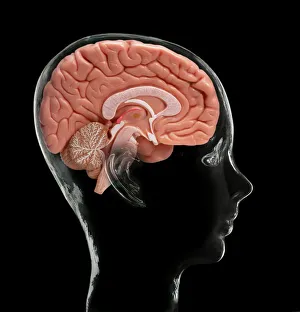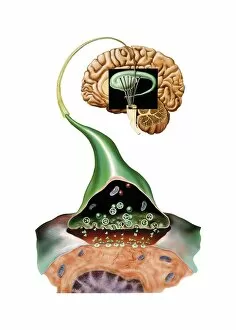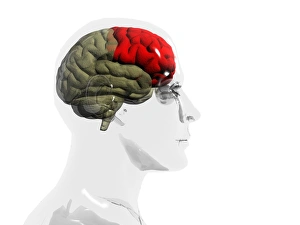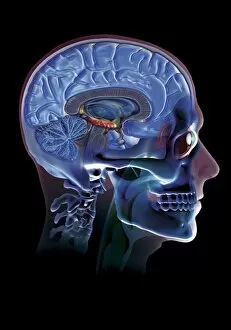Forebrain Collection
The forebrain, also known as the prosencephalon, is a crucial part of the human brain
All Professionally Made to Order for Quick Shipping
The forebrain, also known as the prosencephalon, is a crucial part of the human brain. It encompasses various structures that play significant roles in our daily lives and overall functioning. One remarkable aspect of the forebrain is its intricate design, which can be seen in detailed models depicting the complexity of this vital organ. These models provide us with a visual representation of how different regions within the forebrain interact and contribute to our cognitive abilities. Among these regions, the olfactory system stands out as an essential component. Artworks such as C016/9378 and C013/5940 beautifully illustrate the intricacies of this sensory system responsible for our sense of smell. These artworks showcase its importance in detecting scents and triggering emotional responses associated with certain odors. Furthermore, artwork showcasing foetal brain development highlights how the forebrain evolves during early stages of life. This process is fascinating to observe as it lays down the foundation for future cognitive functions and behaviors. Another captivating feature depicted through anatomical artwork is brain synapses - connections between neurons that enable communication within neural networks. Such illustrations help us understand how information flows through these tiny gaps, allowing us to think, feel, learn, and remember. Additionally, anatomical artwork portraying structures like striatum showcases their role in motor control and reward processing. The striatum plays a crucial part in coordinating movement while also influencing motivation and decision-making processes. Moreover, we cannot overlook another critical region within the forebrain -the limbic system- which regulates emotions and memory formation. Artwork representing this complex network provides insight into its involvement in shaping our emotional experiences. Lastly, exploring further into specific areas like occipital lobe reveals its significance in visual processing. As one of four lobes comprising the cerebral cortex (part of the forebrain), it plays a fundamental role in interpreting visual stimuli received from our surroundings. Delving into various aspects related to "forebrain" unveils the marvels of human brain architecture.










